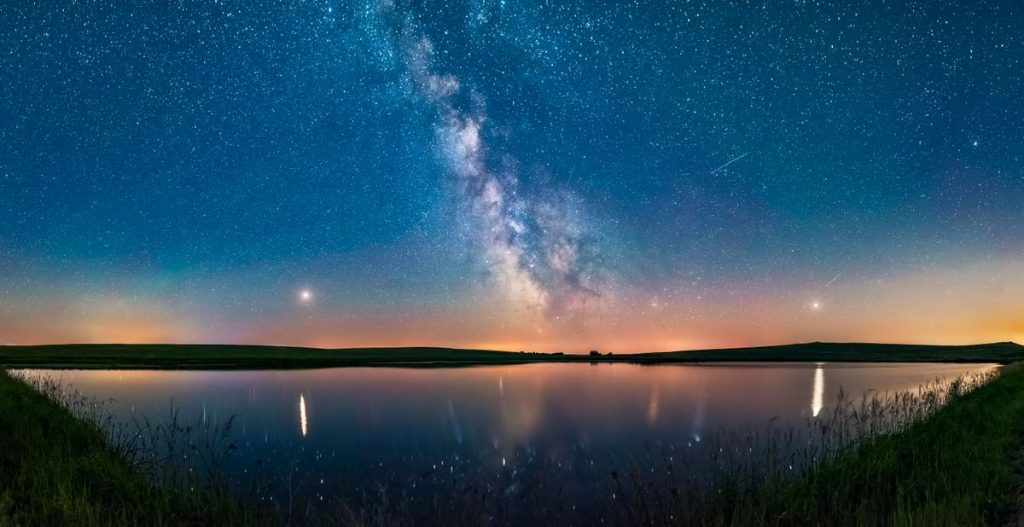The planet Mercury—rarely, if ever seen by most people—will this week rise into the post-sunset sky and be visible extremely close to a famous star.
The smallest planet in the solar system and the closest to the sun is this week on the rise, appearing farther from our star than usual. For a change it won’t be completely lost in the sun’s glare.
If you need another excuse to find a pair of binoculars and a view low to the western horizon after sunset, Friday, July 28, 2023 will see Mercury appear just a tenth of a degree from bright star Regulus in the constellation Leo, the lion, according to the Adler Planetarium.
Be outside in a wide open space or, better still, at the coast with a clear view to the west-northwest horizon and you will see bright planet Venus. Just above is your target—Mercury and Regulus—though you may need binoculars to see them.
Regulus, which means ‘little king’ or ‘prince’ in Latin, is Leo’s brightest star and the 21st brightest star in the night sky. However, although it appears to the naked eye as one point of light, Regulus is actually a quadruple star system, comprising four stars. It’s about 79 light-years from the solar system.
The star is currently on the verge of sinking into the sun’s glare. It won’t be visible again in the night sky until the beginning of 2024.
Mercury, which was visited by the BepiColumbo mission in June, orbits the sun every 88 days. It’s therefore always in Earth’s daytime sky, but almost always lost in the sun’s glare. Only occasionally—according to Earth’s position on its orbital path—does it appear to be far from the sun, so viewable in the early evening night sky or pre-dawn morning sky.
From the surface of Mercury the sun would appear more than three times as large as it does when viewed from Earth, according to NASA.
Wishing you clear skies and wide eyes.
Read the full article here






